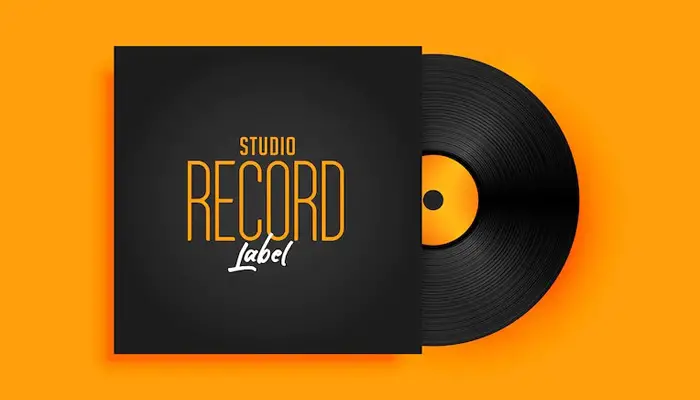
Do you want to know how many songs does an album have?
There is no set number of songs that an album must have. However, most albums contain between 10 and 12 tracks. This allows the artist plenty of space to create a cohesive body of work that tells a story or conveys a message.
In this guide, we’ll delve deeper into the considerations behind album track counts and explore some iconic albums that have shaped musical history.
We will also take a look at some of the most famous albums ever released and see how their tracklisting shaped their legacy.
Understanding Album Track Counts
The concept of album track counts has evolved significantly since the commercial release of James Cole’s “Believe Me If All Those Endearing Young Charms” in 1878, which featured merely two songs—one on each side of the vinyl record.
Over the decades, album lengths have fluctuated in response to various factors, including technological advancements, artistic experimentation, and market trends. While vinyl records of the past constrained albums to a certain length due to physical limitations, the advent of CDs and digital streaming platforms has offered artists greater flexibility in terms of track counts.
Today, the standard range of 10 to 12 tracks per album remains prevalent, reflecting a delicate balance between providing listeners with a substantial musical experience and preventing content overload. This range allows artists to explore diverse themes, experiment with different musical styles, and maintain listener engagement throughout the album’s duration.
Exceptions to this standard are not uncommon and can stem from a variety of reasons. Some artists opt for shorter albums as a deliberate artistic choice, aiming for a more concise and focused listening experience. Others may face budget constraints or time limitations, leading to albums with fewer tracks. Conversely, ambitious conceptual projects or double albums may exceed the typical track count range, offering listeners an immersive and expansive musical journey.
Exploring Iconic Albums:
1. The Beatles – Sgt. Pepper’s Lonely Hearts Club Band (1967)
“Sgt. Pepper’s Lonely Hearts Club Band” marked a revolutionary shift in the landscape of popular music, transcending the boundaries of traditional album formats. With its groundbreaking fusion of rock, psychedelia, and experimentalism, the album’s 14 tracks encapsulated the zeitgeist of the 1960s counterculture. Each song contributed to a cohesive narrative arc, showcasing The Beatles’ unparalleled creativity and innovation.
2. Pink Floyd – The Dark Side of the Moon (1973)
“The Dark Side of the Moon” stands as a magnum opus of progressive rock, renowned for its meticulous craftsmanship and thematic depth. Spanning 10 tracks, the album masterfully explores existential themes such as time, madness, and mortality. Its seamless integration of music and concept, coupled with iconic tracks like “Money” and “Time,” solidified its status as one of the best-selling albums of all time.
3. Michael Jackson – Thriller (1982)
“Thriller” represents a pinnacle of pop perfection, showcasing Michael Jackson’s unparalleled talent and charisma. With its infectious grooves, electrifying performances, and groundbreaking music videos, the album captivated audiences worldwide. Featuring nine tracks, including chart-topping hits like “Beat It” and “Billie Jean,” “Thriller” remains a timeless classic that continues to influence generations of artists.
4. The Beatles – Abbey Road (1969)
“Abbey Road” stands as a testament to The Beatles’ enduring legacy and musical genius. Spanning 17 tracks, the album showcases the band’s versatility and innovation, from the lush harmonies of “Something” to the avant-garde experimentation of “I Want You (She’s So Heavy).” Its iconic cover art and legendary medley on Side B cemented its status as a cultural landmark and one of the greatest albums of all time.
Conclusion: How Many Songs Does an Album Have
In conclusion, the optimal number of songs for an album ultimately depends on a variety of factors, including artistic vision, thematic coherence, and audience expectations. While the standard range of 10 to 12 tracks offers a practical guideline for many artists, it’s essential to prioritize quality over quantity and ensure that each song contributes meaningfully to the overall listening experience.
Whether crafting a concise EP or embarking on an epic double album, artists have the creative freedom to experiment with different track counts and formats. By striking the right balance between artistic expression and listener engagement, they can create albums that resonate deeply with audiences and leave a lasting impact on musical history.
What do you think? How many songs does an album have? How many tracks should an artist include on their album for it to be successful? Let us know in the comments below!
Meanwhile, you can also check out 35+ Primary School Songs for Kids.
Frequently Ask Questions
Is 10 songs enough for an album?
In most cases, it’s best for an album to have between ten and twelve tracks. This allows for a variety of sounds and styles, while also ensuring that the artist doesn’t overwhelm their listeners with too much content at once.
How many songs does the average album have?
Most albums have between ten and twelve tracks.
How many minutes is a 12 song album?
The average length of an album is around 45 minutes, which is usually made up of ten tracks. However, there are some exceptions to this rule. The Beatles’ “Sgt Pepper’s Lonely Hearts Club Band” has 14 tracks, and David Bowie released his first album with just eight songs on it.
You can also check out 13 Popular Songs in 3/4 Time (All Time Favorite) and Top 12 Famous Bluegrass Songs of All Time.



